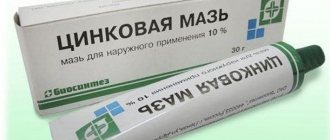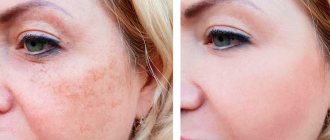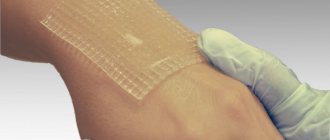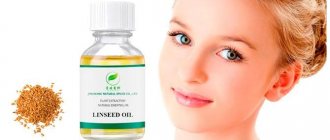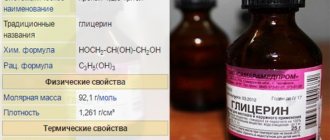To maintain normal hemoglobin levels, a balanced diet is necessary. Excessive nervousness, pale skin, poor appetite and fatigue may indicate anemia and a lack of vitamin B12 in the body. In this case, additional use of special medications is indicated.
What is vitamin B12, release forms
Vitamin B12 is a representative of the water-soluble group of vitamins, can accumulate and be stored in the liver, and contains cobalt.
It is necessary for the human body, as it takes part in hematopoiesis and the production of red blood cells. The source is animal products - dairy and meat products, chicken eggs. As a rule, vegetarians, pregnant women, as well as people diagnosed with atrophic gastritis or chronic enteritis suffer from cyanocobalamin deficiency. The cause of a lack of vitamin B12 may be pathologies that prevent its absorption in the intestines.
To compensate for the lack of cyanocobalamin in the population, pharmaceutical factories produce a variety of drugs containing either one component or a combination of essential vitamins and minerals (vitamin complexes).
You can buy vitamin B12 in pharmacies in several dosage forms:
- capsules for oral administration;
- film-coated tablets;
- solution for injection.
How to use cyanocobalamin for the face?
It is important to use vitamin B12 for the face both in its pure form and as part of various homemade masks. Before applying the substance to the skin, it must first be cleaned. It is recommended to open the ampoule immediately before use. The substance is applied to the skin along massage lines. After this, the vitamin should be completely absorbed, and at the end a moisturizer is applied to the skin.
It is best to carry out this procedure before bed and use a night face cream. At night, metabolic processes are activated, which is why beneficial substances act more effectively. Using face masks that include vitamin B12 and other beneficial components, you will also be able to achieve noticeable results.
What is vitamin B12 for?
First of all, vitamin B12 is needed for the normal functioning of the hematopoietic system, since the substance is necessary for the maturation of red blood cells. Helps prevent anemia. Also cyanocobalamin:
- takes part in providing the body with energy;
- necessary for the reproduction of cells in the bone marrow, nervous system and gastrointestinal tract;
- helps the nervous system work smoothly;
- ensures iron absorption;
- has an analgesic effect;
- needed for metabolism (participates in the metabolism of proteins, fats and carbohydrates);
- serves as a prevention of Alzheimer's disease, depression, schizophrenia, and cardiovascular pathologies.
Age management: skin care after 45 years
Day cream 46+
After about 45 years, the number of lipids noticeably decreases - it is their content in the epidermis that largely determines the skin’s own protection from external factors and rapid evaporation of moisture.
Due to a lack of lipids, dryness appears, the skin becomes rough, and wrinkles are more easily “fixed” in it. Care products at this age should help fill wrinkles, increase elasticity and saturate cells with necessary substances. The listed problems are easily solved by Day Cream 46+ Black Pearl.
Day cream 46+ Black Pearl 50 ml
B12 from Vitamir
One of the popular monopreparations containing cyanocobalamin is Vitamin B12 from the Vitamir company. It is produced in tablets and goes on sale in packages of 30 and 60 pieces. In addition to the main substance, it contains lactose and stearic acid. This is a dietary supplement that is recommended as a dietary supplement as a source of vitamin B12.
Among the contraindications, the manufacturer indicates personal intolerance, pregnancy or breastfeeding.
According to the instructions, you should take 100 mg tablets once a day, one piece during a meal. The course of treatment is one month. Repeating is possible after a month's break.
The appointment must be agreed with the doctor. The price of a pack of 30 pieces starts from 180 rubles, sold without a prescription.
Facial care up to 25 years
At a young age, our skin has high regenerative abilities: it recovers quickly and does not require intensive nutrition. Until the age of 25, you should pay special attention to regular cleansing, moisturizing and sun protection - ultraviolet radiation is called one of the main causes of early aging.
Facial program
Young skin is best suited for caring cosmetics with a light texture: emulsions, lotions or gels. After using such products there should be no feeling of tightness, stickiness or discomfort. Moisturizing masks are great for skin at this age, giving additional radiance, a feeling of freshness and a well-groomed appearance.
Facial program Black Pearl moisturizing
consists of 2 steps for a comprehensive moisturizing effect. Masks with hyaluron fill cells with moisture and give the skin a healthy glow.
Facial program Black Pearl moisturizing 50 ml + 50 ml
B12 from Blagomin
Available in the form of capsules of 0.2 g. One jar contains 90 pieces. In addition to the main active ingredient, it contains gelatin and microcrystalline cellulose.
The intake is indicated to replenish the lack of cyanocobalamin in the body. Also contraindicated for pregnant and lactating women, persons with intolerance to substances from the composition.
The instructions prescribe taking one capsule once a day for a month. Allowed for teenagers over 14 years of age and adults. You can undergo treatment courses several times a year.
The price for a jar starts from 240 rubles, a prescription is not needed to purchase.
Precautionary measures
Cyanocobalamin is a rather capricious element and when using it it is important to take into account a number of nuances:
- B12 does not combine with vitamins C, E, B1 and B3; they stop its effect. But vitamin B6 is an excellent company for cyanocobalamin.
- Before using B12 for the skin of the face, experts advise spending a little time testing. A small amount of liquid is applied to the elbow and wait. If after 10-15 minutes no signs of allergy appear - redness, spots, swelling, itching, then you can proceed directly to the procedure.
- In addition to ampoules, this substance is also produced in capsules and tablets. The drug in such forms is less effective, however, it can also be used dissolved in water.
- B12 cannot be heated, as it will lose its valuable qualities and become useless.
Vitamin B12 solution
Available in ampoules of 10 pieces per package. 1 ml contains 0.5 mg of cyanocobalamin.
Indications for prescribing vitamin injections are:
- anemia due to chronic lack of vitamin B12;
- iron deficiency anemia, as well as caused by severe bleeding (as an additional treatment);
- Cerebral palsy and Down syndrome;
- anemia caused by drug or toxin poisoning;
- liver pathologies (cirrhosis, hepatitis);
- skin diseases (neurodermatitis, psoriasis, dermatitis);
- radiculitis and neuralgia.
The solution is injected into the spinal canal, vein or muscle, under the skin, and also taken orally.
The dosage should be selected by the doctor based on the severity of the condition and the age of the patient.
According to instructions:
- in case of vitamin deficiency and anemia due to it, administration of 100/200 mcg once every two days is indicated;
- for anemia due to bleeding or iron deficiency - 30-100 mcg twice or thrice a week;
- children are prescribed 30-100 mcg per day, depending on the indications;
- anemia with neurological pathology is treated with daily injections of 400-500 mcg for a week, then once every five to seven days.
Therapy can cause allergies, increased heart rate, diarrhea, and nervous excitement.
In the form of a solution, vitamin B12 is contraindicated in pregnant and lactating women, with thromboembolism, and increased production of red blood cells.
Lack of cyanocobalamin must be confirmed by analysis.
The price of a package of 10 ampoules starts from 30 rubles, and is available with a prescription from a doctor.
Review on the use of vitamin B12 in dermatology
Abstract and introduction
Abstract
Vitamin B12, called cobalamin, is a water-soluble vitamin that is important for the circulatory and nervous systems and has a complex relationship with the skin. Changes in cobalamin levels can lead to dermatological manifestations, which may indicate a deficiency or excess of this vitamin. The biochemistry and metabolism of cobalamin is a complex process, the disruption of which can lead to the development of certain diseases. Cutaneous manifestations of cobalamin deficiency include hyperpigmentation (most common); changes in the structure of hair and nails; changes in the oral cavity, including glossitis. In addition, some dermatological conditions, such as vitiligo, aphthous stomatitis, atopic dermatitis, and acne, are associated with excess or deficiency of cobalamin. Skin complications of cobalamin therapy include acne, rosacea, and allergic reactions or anaphylaxis due to cobalamin injection. Because cobalt is a component of cobalamin, patients with cobalt hypersensitivity experience skin manifestations when receiving cobalamin replacement therapy.
Introduction
Vitamin B12, or cobalamin, is a water-soluble vitamin that plays an important role in the circulatory and nervous systems. It exists in various forms in the body and is a cofactor for homocysteine methyltransferase and methylmalonyl-CoA mutase. The main source of cobalamin is animal products, as it is synthesized by microorganisms such as bacteria. This article reviews cobalamin metabolism, diseases associated with elevated cobalamin levels, clinical manifestations of cobalamin deficiency, certain dermatological conditions (vitiligo, aphthous stomatitis, atopic dermatitis), their relationship with cobalamin, and complications of cobalamin therapy. Emphasis is placed on disease states and findings relevant to the dermatologist in order to increase awareness of the various ways in which changes in cobalamin metabolism can influence the diagnosis and treatment of a range of diseases.
Biochemistry of cobalamin
Vitamin B12 exists in the body in various forms, two of which are biologically active coenzymes: methylcobalamin and adenosylcobalamin. Methylcobalamin is a coenzyme of methionine synthetase, a key enzyme in the folate-dependent synthesis of pyrimidines and purines. Adenosylcobalamin is involved in the enzymatic degradation of fatty acids by methylmalonyl CoA mutase. These enzymes are necessary for the normal functioning of the bone marrow and central nervous system [1].
Cobalamin has complex absorption and metabolism, requiring the participation of several coenzymes (Fig. 1). When cobalamin enters the body through food, it is first released from food proteins by pepsin in the stomach. Then it binds to haptocorrin, which is secreted by the cells of the salivary glands and protects cobalamin from the acidic environment of the stomach. Haptocorrin is then degraded in the duodenum by digestive proteases, and free cobalamin binds to intrinsic factor. Intrinsic factor is required for cobalamin to be absorbed by enterocyte receptors in the ileum and to protect it from catabolism by intestinal bacteria. Cobalamin is then transported into the portal circulation and taken up by the liver. Most circulating cobalamin is bound to haptocorrin, a smaller proportion is bound to transcobalamin II, and there is also a small amount of free circulating cobalamin [2]. It is taken up by tissues, mainly the liver, via transcobalamin receptors, which are located on endothelial cells rather than on the hepatocytes themselves. The liver contains enough cobalamin that there are no symptoms of deficiency of this substance for several years [3].
Picture 1.
Cobalamin Metabolism Complex: Once cobalamin enters the stomach, it is released from dietary proteins by pepsin and then binds to haptocorrin, which protects it from the acidic environment of the stomach. In the duodenum, haptocorrin is destroyed by digestive proteases, and free cobalamin binds to intrinsic factor, which promotes the uptake of cobalamin by enterocyte receptors in the ileum. It then enters the portal circulation and is taken up by the liver via transcobalamin receptors on the surface of endothelial cells.
C - cobalamin, H - haptocorrin, IF - internal factor, TCII - transcobalamin
Due to the complexity of cobalamin metabolism and absorption, there are many possibilities for defects resulting in deficiency or imbalance.
Elevated cobalamin levels
Elevated cobalamin is defined as a serum level greater than 950 pg/mL (701 pmol/L) and may be caused by excess intake or artificial administration (eg, cobalamin therapy), release from an internal reservoir. Often, elevated cobalamin levels are due to a qualitative or quantitative increase in the level of transcobalamin (cobalamin transporter) due to excess production or insufficient excretion, as well as lack of affinity of transcobalamin for cobalamin [4]. Elevated cobalamin levels are observed in several pathological conditions, including chronic myeloid leukemia, promyelocytic leukemia, polycythemia vera, and hypereosinophilic syndrome. In these conditions, the greatest increase in cobalamin is observed in hypereosinophilic syndrome. Elevated cobalamin levels are caused by increased production of haptocorrin by granulocytes and their precursors. Haptocorrin may play a role in the differential diagnosis of primary and secondary eosinophilia, as it is not associated with secondary eosinophilia, as is observed in parasitic infections [2]. In hypereosinophilic syndrome, elevated cobalamin levels combined with elevated tryptase levels may identify a subgroup of patients with the myeloproliferative variant of the disease with tissue fibrosis and a poor prognosis. These patients have an cryptic FIP1L1-PDGFRA mutation that confers sensitivity to imatinib [5]. In addition to myeloproliferative diseases, acute hepatitis, cirrhosis, hepatocellular carcinoma and metastatic liver disease may also cause an increase in circulating cobalamin caused by the release of cobalamin during hepatic cytolysis and/or a decrease in cobalamin clearance by the affected liver [2]. In many disease states that cause elevated cobalamin levels, cutaneous manifestations may occur. For example, hypereosinophilic syndrome can manifest itself in the form of eczema, erythroderma, lichenification, recurrent urticaria, angioedema, and less commonly in the form of difficult-to-treat ulcers of the intestinal mucosa [6]. Additionally, increased cobalamin levels following cobalamin therapy may result in skin manifestations and will be discussed later.
Cobalamin deficiency
Vitamin B12 is one of the most common types of vitamin deficiency, however there is no consensus on the cut-off level for cobalamin or folic acid, holotranscobalamin, methylmalonic acid and homocysteine. A recent review article showed that serum cutoff levels for deficiency varied widely in journal articles: for cobalamin 100-350 µmol/L, holotranscobalamin 20-50 µmol/L, methylmalonic acid 0.210-0.470 lmol/L , homocysteine 10-21.6 lmol / l and folic acid 3.7-15.9 nmol / l [7]. Additionally, pseudocobalamin deficiency (serum cobalamin levels are low but the deficiency is not true) can sometimes be caused by transcobalamin deficiency. In this case, methylmalonic acid and homocysteine levels should be determined to identify pseudodeficiency, and treatment with cobalamin should not be carried out [8]. Another way to determine cobalamin deficiency is to measure the level of methylmalonic acid in urine, which is a reliable laboratory marker in newborns [9].
Diagnosis of vitamin B12 deficiency is based on decreased serum cobalamin levels, increased methylmalonic acid levels, or increased homocysteine levels (Figure 2). One study of 406 patients with known vitamin B12 deficiency found that 98.4% of patients had an increase in serum methylmalonic acid and 95.9% had an increase in serum homocysteine (defined as three standard deviations above the mean). When used to diagnose methylmalonic acid and homocysteine levels, the sensitivity is 99.8%. In this study, 28% of patients had a normal hematocrit level and 17% had a normal mean corpuscular volume (MVC). Thus, hematological manifestations of cobalamin deficiency have not yet been observed [10]. When assessing laboratory values, it should also be taken into account that folate deficiency can increase homocysteine levels and cause false-positive low levels of vitamin B12 in the blood serum. Additionally, kidney disease can raise methylmalonic acid levels.
Figure 2.
Cobalamin is a cofactor for the enzymes homocysteine methyltransferase and methylmalonyl-CoA mutase. This facilitates the conversion of homocysteine, folic acid and methylmalonyl-CoA to methionine and succinyl-CoA.
K oA coenzyme A
The prevalence of cobalamin deficiency is difficult to estimate because the likelihood of underdiagnosis is high and the subclinical condition is often considered common. Cobalamin deficiency rarely occurs due to insufficient dietary intake, although the condition can sometimes occur with strict vegetarianism. Deficiency usually develops as a result of malabsorption (with sprue, enteritis or infection caused by the broad tapeworm - Diphyllobothrium Latum), with pernicious anemia (with a decrease in the amount of gastric intrinsic factor), resection of the terminal ileum (often with Crohn's disease) or with excessively rapid growth intestinal bacteria. It can also occur in infants if the mother has a vitamin B12 deficiency, which can lead to poor growth and other developmental problems [1]. A very common cause of cobalamin deficiency is the widespread use of gastric acid blockers, especially in old age [11].
Normal variations in cobalamin and folate levels are associated with different genetic loci in different populations. Gene products are involved in cobalamin uptake pathways and metabolism [12]. Genetic defects in intracellular cobalamin conversion have been classified into nine complementation groups. These mutations lead to methylmalonic aciduria, homocystinuria, or a combination of both, with devastating consequences. There is now widespread newborn screening for homocysteine and methyl malonate levels, highlighting the importance of timely identification and early treatment of these patients [13]. A recently described mutation is associated with the adenosine triphosphate (ATP)-binding cassette transporter ABCD4, which is involved in the release of cobalamin from lysosomes into the cytoplasm [14]. While other mutations result in a severely altered phenotype with minor skin manifestations, this mutation produces a skin pigmented phenotype. In one case, a 14-year-old boy had hyperpigmentation along with neurological disorders [15], in another case, a 12-year-old girl had diffuse progressive skin pigmentation in the absence of neurological and cardiovascular complications [16].
Very rarely, the cause of cobalamin deficiency is recreational abuse of nitric oxide gas. One case reported that a patient developed skin hyperpigmentation after nitrous oxide abuse for 2 years, and was also found to have posterior and lateral myeloneuropathy, low serum vitamin B12 levels, and elevated serum homocysteine levels [17].
Extracutaneous clinical manifestations of cobalamin deficiency vary widely. Hematologic manifestations include megaloblastic macrocytic anemia with hypersegmented polymorphonuclear cells and pancytopenia. Neurologic manifestations may include paresthesia, peripheral neuropathy, and combined systemic disease with demyelination of the dorsal and corticospinal tract. Psychiatric changes include irritability, personality changes, mild memory loss, dementia, depression and psychosis. There have also been numerous reports of cobalamin deficiency with misdiagnosis of parasitic disease, and serum cobalamin and folic acid should be assessed [18]. Other manifestations include a possible increased risk of myocardial infarction and stroke, as well as infertility [11]. Some of these manifestations may be attributed to the elevated levels of homocysteine and methylmalonic acid observed in cobalamin deficiency.
Skin manifestations of cobalamin deficiency
A variety of skin manifestations are associated with cobalamin deficiency, most of which are more common in patients with dark pigmentation. A retrospective and prospective study of 63 Indian patients with neurological symptoms associated with vitamin B12 deficiency found that 41% had skin and mucosal changes, glossitis in 31%, hyperpigmentation in 19%, hair texture changes in 9%, angular stomatitis in 8% and vitiligo in 3% [19]. In addition, erythema nodosum was described in a 38-year-old woman with cobalamin deficiency, which resolved with vitamin B12 replacement therapy [20].
A sign of hyperpigmentation is the generalization of the process with the location of pigment mainly in the area of the bends, on the palms, soles and in the oral cavity. Pigmentation may be accentuated in pressure areas such as the terminal phalanges, knees and elbows. Hyperpigmentation may be the first manifestation of vitamin B12 deficiency [21]. In addition, linear streaks on the nails and hair changes, including graying, may appear [22]. These phenomena are usually reversible with several months of replacement therapy.
The pathological diagnosis of hyperpigmentation due to vitamin B12 deficiency shows an increase in melanin in the basal layer of the epidermis. One electron microscopic study showed many melanosomes in melanocytes and surrounding keratinocytes. This study suggested that the main mechanism for the appearance of hyperpigmentation in vitamin B12 deficiency is associated with an increase in melanin synthesis [23]. In one patient with reddish hyperpigmentation due to chronic cobalamin deficiency, which resolved after injection of vitamin B12, biopsy revealed an increase in the number of cutaneous blood vessels. Pathological examination showed weak expression of vascular endothelial growth factor, which may promote angiogenesis in this patient and may represent a mechanism for hyperpigmentation due to cobalamin deficiency [24]. In addition, it has been suggested that the increase in melanin may be due to the effect of cobalamin on reducing the level of the reduced type of glutathione, which normally inhibits tyrosinase [16].
Oral manifestations of cobalamin deficiency include glossitis, glossodynia, recurrent ulcers, lingual paresthesia, taste distortion (taste perversion), denture intolerance, dry mouth, stomatitis, cheilitis, and Hunter (or Moyler-Hunter) glossitis and are the classic form of glossitis associated with vitamin B12 deficiency. Moreover, in 25% of cases of cobalamin deficiency with oral manifestations, diffuse erythema and tongue atrophy occurred. It has been suggested that a more specific and early manifestation of cobalamin deficiency is glossitis with atrophic linear lesions occurring on the tongue and hard palate. Linear lesions may appear before the development of anemia, which is an early diagnostic sign [25].
Dermatological diseases associated with cobalamin deficiency
Vitiligo
Vitiligo can be a manifestation of cobalamin deficiency, although in most cases the two conditions are rarely combined. It can be difficult to determine when to look for cobalamin deficiency in patients with vitiligo. Karadag et al. [26] compared various serum markers of cobalamin deficiency, including cobalamin, folic acid, homocysteine and holotranscobalamin in a group of 69 patients with vitiligo and 52 controls. They found that the vitiligo group had higher homocysteine levels and hemoglobin levels and lower levels of vitamin B12 and holotranscobalamin, which is considered an early marker of deficiency. Scientists believed that this relationship may be associated with the general genetic background in patients with cobalamin deficiency, hyperhomocysteinemia and vitiligo. Two previous studies have examined the relationship between elevated homocysteine levels and vitiligo, with conflicting results. Scientists Shaker and El-Talawi [27] showed that homocysteine levels were significantly higher in 26 patients with vitiligo than in healthy controls, while Balchi et al. [28] found no significant differences in homocysteine levels between 48 patients with vitiligo and controls. In addition, according to the literature, cobalamin as a drug for the treatment of vitiligo has shown conflicting results. In a study of 15 patients with vitiligo, 8 developed repigmentation with long-term oral administration of folic and ascorbic acids and parenteral vitamin B12 [29]. However, another study of 27 patients compared ultraviolet (UV) therapy alone and UVB therapy combined with vitamin B12 and folic acid and found no significant difference in repigmentation rates between the two groups [30]. Although a possible link between cobalamin deficiency and vitiligo exists, further research is needed to clarify the nature of this relationship and its clinical implications.
Aphthous stomatitis
Recurrent aphthous stomatitis can be a chronic and debilitating disease that is refractory to many types of therapy. Atrophic glossitis is a known manifestation of cobalamin deficiency, but aphthous stomatitis also appears to be associated with cobalamin deficiency. In patients with recurrent minor manifestations of aphthous stomatitis, a decrease in dietary intake of cobalamin and folic acid was found compared to a control group of subjects similar in age and gender and consumption of foods with similar nutritional value. No difference was noted when examining vitamin E, vitamin B6, niacin, thiamine, vitamin C, or vitamin A [31]. In a randomized, double-blind, placebo-controlled study, sublingual vitamin B12 at a dose of 1000 μg was effective in the treatment of recurrent aphthous stomatitis, regardless of the patient's serum vitamin B12 level [32].
Treating acne with isotretinoin.
Karadag et al. [33] studied 68 acne patients and found that isotretinoin therapy decreased levels of vitamin B12, folate, and holotranscobalamin while increasing homocysteine levels. It has been suggested that the occurrence of neuropsychiatric side effects with isotretinoin treatment may be explained by cobalamin deficiency.
Atopic dermatitis
Cobalamin has been used to treat many dermatological diseases even in the absence of signs of clinical or subclinical deficiency [34]. Topical cobalamin treatment has been shown to be effective as a safe treatment for atopic dermatitis. A randomized, controlled trial of 49 patients with atopic dermatitis examined the effects of 0.07% cyanocobalamin cream for 8 weeks applied to one side of the body and a cream base to the other side. Cyanocobalamin cream was well tolerated and performed well from the patient and investigator perspectives. A modified scale for assessing six domains and six features of atopic dermatitis was used; these signs include dryness/flaking, itching, erosions, lichenification, erythema and infiltration. In this study, the scale score dropped significantly more on the treated side than on the placebo side (55.34 points for vitamin B12 cream versus 28.87 points for the placebo group) [35]. Under invitro conditions, vitamin B12 is able to suppress cytokine production by T lymphocytes, which can initiate inflammatory phenomena in the form of atopic dermatitis [36]. This explains the successful treatment with a cream containing vitamin B12. Another study found that the liposomal hydrogel formulation adenosylcobalamin (a vitamin B12 derivative) increased skin permeability and was more effective than cobalamin in treating atopic dermatitis in mice [37]. These results provide hope that cobalamin may represent an alternative therapeutic option for the treatment of atopic dermatitis in the future.
Complications of vitamin B12
While cobalamin has demonstrated effectiveness in treating some dermatological problems, it is widely used to treat cobalamin deficiency. It is important for the dermatologist to recognize the various dermatologic side effects that may complicate cobalamin treatment. There have been several reports of monomorphic acne in patients receiving intramuscular injections of cobalamin. The rash resolved after cessation of therapy [38]. Cyanocobalamin, pyridoxine (B6) and riboflavin (B2) have been reported to aggravate existing acne [38]. Supratherapeutic doses of vitamin B12 and B6 at 4000 and 2000% of the recommended daily dose, respectively, resulted in fulminant rosacea in a 17-year-old woman [39]. Allergic and anaphylactic reactions have been reported with intramuscular and parenteral administration of cobalamin. This was most commonly associated with cyanocobalamin, but occurred with both cyanocobalamin and hydroxocobalamin, with cross-reaction occurring in some patients [40, 41]. In patients with hypersensitivity to cyanocobalamin, switching to hydroxocobalamin is an acceptable treatment option [42]. In one case of a patient with hypersensitivity to both drugs, Kartal et al. [43] were able to reduce sensitivity to cyanocobalamin.
Because cobalt is a component of cobalamin, cobalt sensitivity may cause problems in patients receiving vitamin B12 replacement therapy. In patients with allergic contact dermatitis to cobalt, several cases of skin reactions, including chronic vesicular dermatitis of the hands, cheilitis and stomatitis, have been reported when replacing it with oral cobalamin [44]. When injecting vitamin B12, an erythematous, itchy reaction may occur at the injection site. Supplementation of natural products containing cobalt in the form of cobalamin was not associated with the occurrence of systemic contact dermatitis due to the very low cobalt content. However, ingestion of foods containing large amounts of cobalt in other forms has resulted in flare-ups of dyshidrotic eczema in some patients, regardless of test results [45]. StuckertandNedorost proposed a point system for patients to reduce their intake of dietary cobalt [46]. It should be noted that the amount of cobalt in dental implants is increasing and can lead to oral hypersensitivity in the form of severe burning sensation in the mouth [47]. Cobalt hypersensitivity is often associated with nickel sensitivity, and the patient should be asked about nickel allergy before initiating vitamin B12 therapy [48]. Topical tests for cobalt are commercially available and play an important role in assessing skin exposure and health risks associated with metal exposure (for example, information available at this link: https://www.smartpractice.com). [49]
conclusions
Cobalamin is an essential vitamin for the normal functioning of the human body, and its deficiency is quite common in old age. The dermatologist plays a large role in diagnosing deficiency by identifying cutaneous and mucosal manifestations. It is also important to recognize the presence of cutaneous complications of cobalamin therapy, as many patients are treated accordingly. There is a link between cobalamin intake and dermatological diseases such as vitiligo, atopic dermatitis and canker sores. Additionally, elucidating the exact relationship between these diseases and cobalamin may lead to further advances in diagnosis and treatment.
Key points
Cobalamin deficiency and its excess are important to consider in the differential diagnosis of hyperpigmentation (especially with excessive hyperpigmentation in the flexure area, on the palms, soles and in the oral cavity), glossitis, vitiligo, atopic dermatitis, erythema and changes in hair and nails.
Dermatologic complications of cobalamin therapy include, but are not limited to, acne, rosacea, allergic dermatitis, and anaphylaxis.
Isotretinoin can reduce cobalamin levels, while atopic dermatitis and canker sores can be treated with various cobalamin formulations. Current research regarding the treatment of vitiligo with cobalamin is inconclusive.
Literature
1. Stabler SP. Vitamin B12 Deficiency. N Engl J Med. 2013;368:149–60.
2. Ermens AA, Vlasveld LT, Lindemans J. Significance of elevated cobalamin (vitamin B12) levels in blood. Clin Biochem. 2003;36(8):585–90.
3. Kozyraki R, Cases O. Vitamin B12 absorption: mammalian physiology and acquired and inherited disorders. Biochimie. 2013;95(5):1002–7.
4. Andre`s E, Serraj K, Zhu J, Vermorken AJ. The pathophysiology of elevated vitamin B12 in clinical practice. Q.J.M. 2013;106(6):505–15.
5. Klion AD, Robyn J, Maric I, Fu W, Schmid L, Lemery S, Noel P, Law MA, Hartsell M, Talar-Williams C, Fay MP, Dunbar CE, Nutman TB. Relapse following discontinuation of imatinib mesylate therapy for FIP1L1/PDGFRA-positive chronic eosinophilic leukemia: implications for optimal dosing. Blood. 2007;110(10):3552–6.
6. Leiferman KM, Gleich GJ, Peters MS. Dermatologic manifestations of the hypereosinophilic syndromes. Immunol Allergy Clin North Am. 2007;27(3):415.
7. Aparicio-Ugarriza R, Palacios G, Alder M, González-Gross M. A review of the cut-off points for the diagnosis of vitamin B12 deficiency in the general population. Clin Chem Lab Med. 2014 (Epub ahead of print).
8. Adcock BB, McKnight JT. Cobalamin pseudodeficiency due to a transcobalamin I deficiency. South Med J 2002;95(9):1060–2.
9. Kalay Z, Islek A, Parlak M, Kirecci A, Guney O, Koklu E, Kalay S. Reliable and powerful laboratory markers of cobalamin deficiency in the newborn: plasma and urinary methylmalonic acid. J Matern Fetal Neonatal Med. 2014 (Epub ahead of print).
10. Savage DG, Lindenbaum J, Stabler SP, Allen RH. Sensitivity of serum methylmalonic acid and total homocysteine determinations for diagnosing cobalamin and folate deficiencies. Am J Med. 1994;96:239–46.
11. Oh R, Brown DL. Vitamin B12 deficiency. Am Fam Physician. 2003;67(5):979–86.
12. Grarup N, Sulem P, Sandholt CH, Thorleifsson G, Ahluwalia TS, Steinthorsdottir V, Bjarnason H, Gudbjartsson DF, Magnusson OT, Sparsø T, Albrechtsen A, Kong A, Masson G, Tian G, Cao H, Nie C, Kristiansen K, Husemoen LL, Thuesen B, Li Y, Nielsen R, Linneberg A, Olafsson I, Eyjolfsson GI, Jørgensen T, Wang J, Hansen T, Thorsteinsdottir U, Stefánsson K, Pedersen O. Genetic architecture of vitamin B12 and folate levels uncovered carefully sequenced large datasets. PLoS Genet. 2013;9(6):e1003530.
13. Froese DS, Gravel RA. Genetic disorders of vitamin B12 metabolism: eight complementation groups-eight genes. Expert Rev Mol Med. 2010;12:e37.
14. Coelho D, Kim JC, Miousse IR, Fung S, du Moulin M, Buers I, Suormala T, Burda P, Frapolli M, Stucki M, Nürnberg P, Thiele H, Robenek H, Höhne W, Longo N, Pasquali M , Mengel E, Watkins D, Shoubridge E, Majewski J, Rosenblatt D, Fowler B, Rutsch F, Baumgartner M. Mutations in ABCD4 cause a new inborn error of vitamin B12 metabolism. Nat Genet. 2012;44:1152–5.
15. Kim JC, Lee NC, Hwu PW, et al. Late onset of symptoms in an atypical patient with the cblJ inborn error of vitamin B12 metabolism: diagnosis and novel mutation revealed by exome sequencing. Mol Genet Metabol. 2012;107:664–8.
16. Takeichi T, Hsu CK, Yang HS, Chen HY, Wong TW, Tsai WL, Chao SC, Lee JY, Akiyama M, Simpson MA, McGrath JA. Progressive hyperpigmentation in a Taiwanese child due to an inborn error of vitamin B12 metabolism (cbIJ). Br J Dermatol. 2014 (Epub 2014 Sep 18).
17. Chiang TT, Hung CT, Wang WM, Lee JT, Yang FC. Recreational nitrous oxide abuse-induced vitamin B12 deficiency in a patient presenting with hyperpigmentation of the skin. Case Rep Dermatol. 2013;5(2):186–91.
18. Pope FM. Parasitophobia as the presenting symptom of vitamin B12 deficiency. Practitioner. 1970;204(221):421–2.
19. Aaron S, Kumar S, Vijayan J, Jacob J, Alexander M, Gnanamuthu C. Clinical and laboratory features and response to treatment in patients presenting with vitamin B12 deficiency-related neurological syndromes. Neurol India. 2005;53(1):55–8.
20. Volkov I, Rudoy I, Press Y. Successful treatment of chronic erythema nodosum with vitamin B12. J Am Board Fam Pract. 2005;18(6):567–9.
21. Srivastava N, Chand S, Bansal M, Srivastava K, Singh S. Reversible hyperpigmentation as the first manifestation of dietary vitamin B12 deficiency. Indian J Dermatol Venereol Leprol. 2006;72:389–90.
22. Niiyama S, Mukai H. Reversible cutaneous hyperpigmentation and nails with white hair due to vitamin B12 deficiency. Eur J Dermatol. 2007;17(6):551–2.
23. Mori K, Ando I, Kukita A. Generalized hyperpigmentation of the skin due to vitamin B12 deficiency. J Dermatol. 2001;28(5):282–5.
24. Aroni K, Anagnostopoulou K, Tsagroni E, Ioannidis E. Skin hyperpigmentation and increased angiogenesis secondary to vitamin B12 deficiency in a young vegetarian woman. Acta Derm Venereol. 2008;88(2):191–2.
25. Graells J, Ojeda RM, Muniesa C, Gonzalez J, Saavedra J. Glossitis with linear lesions: an early sign of vitamin B12 deficiency. J Am Acad Dermatol. 2009;60(3):498–500.
26. Karadag AS, Tutal E, Ertugrul DT, Akin KO, Bilgili SG. Serum holotranscobalamine, vitamin B12, folic acid and homocysteine levels in patients with vitiligo. Clin Exp Dermatol. 2012;37:62–4.
27. Shaker OG, El-Tahlawi SMR. Is there a relationship between homocysteine and vitiligo? A pilot study. Br J Dermatol. 2008;159:720–4.
28. Balci DD, Yonden Z, Yenin JZ, Okumus N. Serum homocysteine, folic acid and vitamin B12 levels in vitiligo. Eur J Dermatol. 2009;19:382–3.
29. Montes LF, Diaz ML, Lajous J, Garcia NJ. Folic acid and vitamin B12 in vitiligo: a nutritional approach. Cutis. 1992;50(1):39–42.
30. Tjioe M, Gerritsen MJ, Juhlin L, van de Kerkhof PC. Treatment of vitiligo vulgaris with narrow band UVB (311 nm) for one year and the effect of addition of folic acid and vitamin B12. Acta Derm Venereol. 2002;82(5):369–72.
31. Kozlak ST, Walsh SJ, Lalla RV. Reduced dietary intake of vitamin B12 and folate in patients with recurrent aphthous stomatitis. J Oral Pathol Med. 2010;39(5):420–3.
32. Volkov I, Rudoy I, Freud T, Sardal G, Naimer S, Peleg R, Press Y. Effectiveness of vitamin B12 in treating recurrent aphthous stomatitis: a randomized, double-blind, placebo-controlled trial. J Am Board Fam Med. 2009;22(1):9–16.
33. Karadag AS, Tutal E, Ertugrul DT, Akin KO. Effect of isotretinoin treatment on plasma holotranscobalamin, vitamin B12, folic acid, and homocysteine levels: non-controlled study. Int J Dermatol. 2011;50(12):1564–9.
34. Volkov I, Press Y, Rudoy I. Vitamin B12 could be a “master key” in the regulation of multiple pathological processes. J Nippon Med Sch. 2006;73:65–9.
35. Stücker M, Pieck C, Stoerb C, Niedner R, Hartung J, Altmeyer P. Topical vitamin B12—a new therapeutic approach in atopic dermatitis—evaluation of efficacy and tolerability in a randomized placebo-controlled multicentre clinical trial. Br J Dermatol. 2004;150:977–83.
36. Yamashiki M, Nishimura A, Kosaka Y. Effects of methylcobalamin (vitamin B12) on in vitro cytokine production of peripheral blood mononuclear cells. J Clin Lab Immunol. 1992;37(4):173–82.
37. Jung SH, Cho YS, Jun SS, Koo JS, Cheon HG, Shin BC. Topical application of liposomal cobalamin hydrogel for atopic dermatitis therapy. Pharmazie. 2011;66(6):430–5.
38. Dupré A, Albarel N, Bonafe JL, Christol B, Lassere J. Vitamin B-12 induced acnes. Cutis. 1979;24(2):210–1.
39. Jansen T, Romiti R, Kreuter A, Altmeyer P. Rosacea fulminans triggered by high-dose vitamins B6 and B12. J Eur Acad Dermatol Venereol. 2001;15(5):484–5.
40. Bilwani F, Adil SN, Sheikh U, Humera A, Khurshid M. Anaphylactic reaction after intramuscular injection of cyanocobalamin (vitamin B12): a case report. J Pak Med Assoc. 2005;55(5):217–9.
41. Tordjman R, Genereau T, Guinnepain MT, Weyer A, Lortholary O, Royer I, Casassus P, Guillevin L. Reintroduction of vitamin B12 in 2 patients with prior B12-induced anaphylaxis. Eur J Haematol. 1998;60(4):269–70.
42. Moloney FJ, Hughes R, O'Shea D, Kirby B. Type I immediate hypersensitivity reaction to cyanocobalamin but not hydroxycobalamin. Clin Exp Dermatol. 2008;33(4):412–4.
43. Kartal O, Gulec M, Demirel F, Yesillik S, Caliskaner Z, Sener O. Vitamin B12 allergy and successful desensitisation with cyanocobalamin: a case report. Allergol Immunopathol. 2012;40(5):324–5.
44. Price ML, MacDonald DM. Cheilitis and cobalt allergy related to ingestion of vitamin B12. Contact Dermatitis. 1981;7(6):352.
45. Veien NK, Hattel T, Justesen O, Norholm A. Oral challenge with nickel and cobalt in patients with positive patch tests to nickel and/or cobalt. Acta Derm Venereol. 1987;67:321–5.
46. Stuckert J, Nedorost S. Low-cobalt diet for dyshidrotic eczema patients. Contact Dermatitis. 2008;59:361–5.
47. Thyssen JP, Menné T, Møller P, Jellesen MS, Johansen JD. A cobalt spot test was useful in the diagnostic work-up of a cobalt allergic patient suffering from oral hypersensitivity to cobalt. J Am Acad Dermatol. 2011;65(3):659–60.
48. Veien NK. Systemic contact dermatitis. Int J Dermatol. 2011;50(12):1445–56.
49. Midander K, Julander A, Skare L, Thyssen JP, Liden C. The cobalt spot test—further insights into its performance and use. Contact Dermatitis. 2013;69(5):280–7.

